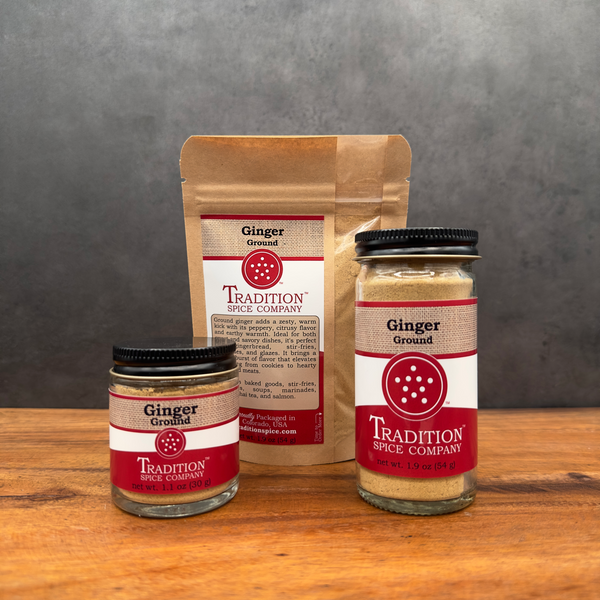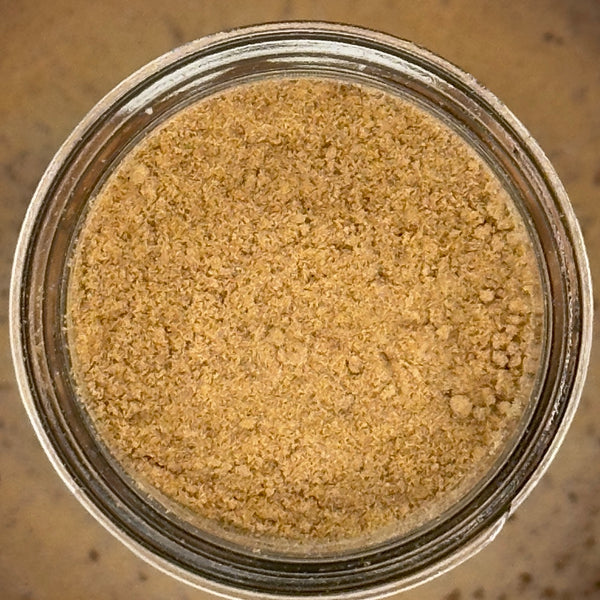Ginger’s Golden Touch: The Story Behind Ground Ginger
Apr 11, 2025
Ground ginger might sit quietly in the pantry, but its path from root to powder is rooted in centuries of cultivation, global trade, and culinary ingenuity. Zesty and warm, this aromatic spice brings depth to both savory and sweet dishes. But to truly appreciate it, we must start underground, where ginger’s knotted rhizomes first take hold.
Where Ginger Takes Root: A Look at Its Global Origins
Zingiber officinale, known simply as ginger, thrives in tropical and subtropical climates where warmth, moisture, and well-drained soil meet. Native to Southeast Asia, ginger has long been cultivated in India, which remains one of the largest producers and exporters in the world. In India, states like Kerala, Karnataka, and Odisha are known for lush ginger farms, where the monsoon-fed soil is rich in humus and mineral content. Farmers, often from multi-generational agrarian communities, tend to the plants with intimate knowledge of rainfall patterns and crop rotation to maintain soil fertility.
Ginger is also cultivated in Nigeria, China, and Indonesia—each producing slightly different flavor profiles depending on the local soil and drying techniques. In the Western Hemisphere, Jamaica is celebrated for its especially pungent, citrusy ginger, while Peru and Brazil have seen growing success with export-quality crops. The United States grows ginger on a smaller scale, mostly in Hawaii, where volcanic soil, tropical rains, and steady temperatures create ideal growing conditions.
Cultivation and Care: Climate, Soil, and the Human Element
Ginger requires a consistently warm climate with plenty of rainfall—ideally more than 60 inches annually—and thrives in loamy, well-drained soil with a slightly acidic to neutral pH. The planting process begins with seed rhizomes, not seeds in the traditional sense, which are segmented and placed into shallow beds. Over the growing season, which can last eight to ten months, the plants grow tall with narrow leaves and require steady weeding, mulching, and irrigation.
Farmers in these regions often work by hand, nurturing each plot with care. In countries like India and Jamaica, women play a vital role in the weeding, harvesting, and washing stages. Their labor-intensive methods ensure the highest quality roots are selected for drying and grinding.
From Rhizome to Powder: How Ground Ginger Is Made
After harvest, ginger roots are cleaned and peeled. The peeling is often done by hand to prevent bruising and preserve the essential oils. Next comes the drying process, which is crucial to developing ground ginger’s distinctive flavor. In many regions, the roots are sun-dried on raised platforms to allow airflow, though some commercial operations use mechanical drying to speed up the process and control humidity.
Once thoroughly dried, the ginger becomes firm and fibrous. It is then milled into a fine powder. This final step is where aroma and flavor concentrate. The grinding releases gingerol and shogaol compounds—the chemical backbones of ginger’s sharpness and warmth. Proper grinding also extends shelf life by reducing moisture, locking in flavor and fragrance until it meets your kitchen.
Culinary Roles: Where Ground Ginger Works Its Magic
In baking, ground ginger lends its sharp-sweet complexity to gingerbread cookies, spiced cakes, and holiday confections, offering warmth and depth that’s nostalgic and invigorating. It’s also essential in spice blends like garam masala or Chinese five-spice, where its pungency balances against cinnamon, cloves, and star anise.
Ground ginger plays a savory role in stir-fries and marinades, pairing especially well with soy sauce, garlic, and sesame oil to enliven meats and tofu. In soups and stews, it imparts a gentle heat that builds over time, working beautifully with lentils, squash, or chicken.
Recipes That Highlight Ground Ginger
Try crafting a simple carrot ginger soup where sautéed onions and garlic meet ground ginger in a simmering blend of carrots and broth, finished with coconut milk for creaminess. The ginger rounds out the sweetness of carrots while giving the soup a warm undertone.
For a sweet option, consider a batch of molasses cookies. Dark brown sugar, molasses, cinnamon, and ground ginger come together in a soft dough that bakes into chewy cookies with just the right amount of zing.
Or prepare a quick ginger soy glaze: combine ground ginger with soy sauce, honey, garlic, and a touch of vinegar. Simmer until slightly thickened, then brush over roasted salmon or grilled vegetables for a bold, balanced flavor.
Conclusion: A Spice with Deep Roots and Bold Character
Ground ginger carries with it the essence of the tropics, the labor of skilled farmers, and centuries of culinary evolution. From the loamy fields of India to the spice jars in kitchens around the world, it continues to connect cultures and generations. Whether warming a holiday cookie or adding kick to a weeknight stir-fry, ground ginger proves that spice doesn’t need to shout to be heard—sometimes, a whisper of warmth is all it takes.










